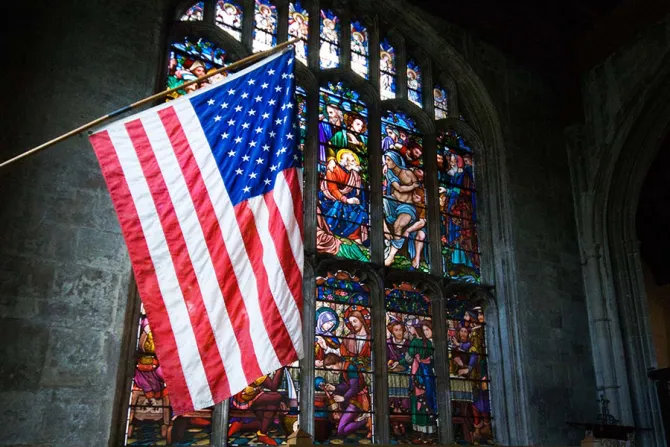Washington D.C., Nov 20, 2018 / 03:14 am
Last week marked the 25th anniversary of the enactment of the Religious Freedom Restoration Act, known as RFRA.
While the law is well-known within legal circles, many Americans may not realize that RFRA is one of the primary legislative pillars upon which religious freedom arguments have rested in the last quarter century.
What exactly is RFRA? What does it say, how did it come to be passed, and what are the primary challenges that it faces today?
The Religious Freedom Restoration Act clarifies the standards that should be used in judging religious freedom disputes involving the First Amendment's free exercise clause. That clause says that Congress shall make no law prohibiting the free exercise of religion.
But what are the limits to what may be carried out in the name of free exercise of religion? What is to stop an individual or group from carrying out acts of rape, theft, or human sacrifice, and claiming that they are exercising their protected religious beliefs in doing so?
RFRA helps answer that question. It says that the federal government may not "substantially burden" the free exercise of religion, unless there is a "compelling government interest" in doing so, and it is carried out in the "least-restrictive" manner possible.
Over the last 25 years, courts have used these standards to evaluate various religious freedom claims that conflict with established laws. In one case, courts upheld the right of an Arkansas inmate to grow a beard as required by his Muslim faith. In another, a Native American feather dancer was allowed to use eagle feathers in a religious ceremony.
In a high-profile 2014 case, the Supreme Court ruled that Hobby Lobby and similar employers could not be forced to comply with the federal contraception mandate against their religious beliefs. In a 5-4 decision, the court ruled that the federal government had failed to prove that the mandate was the "least restrictive means" of advancing its goal of providing free birth control to women.
RFRA was initially passed in response to two high profile cases involving American Indians. In one case, the Supreme Court ruled against the use of an illegal hallucinogen – peyote – in a Native American religious service. In the other, the court upheld the U.S. Forest Service's efforts to build a road through land considered sacred by several tribes.
At the time of its passage, RFRA enjoyed wide bipartisan support and was not considered controversial. Introduced by Democrats Chuck Schumer and Ted Kennedy, it passed unanimously in the House and by a 97-3 vote in the Senate. President Bill Clinton signed it into law Nov. 16, 1993.
In recent years, however, RFRA has drawn criticism, particularly as it relates to same-sex marriage and the provision of free contraception. These clashes with claims of women's rights and LGBT rights have led some people to question RFRA, or call for it to be limited or repealed.
The National LGBT Bar Association has warned of the "dangerous results" of RFRA. In recent years, Democrats in the House and Senate have made several failed attempts to introduce legislation that would limit RFRA in cases where religious freedom comes into conflict with other civil rights. Chai Feldblum, appointed to the Equal Employment Opportunity Commission under both Obama and Trump, has said that when religious liberty conflicts with sexual rights, "I'm having a hard time coming up with any case in which religious liberty should win."
RFRA applies only to the federal government, although in recent years, similar laws have increasingly been proposed or passed in many state legislatures as well. State RFRAs have also faced heated objections. Most notably, then-governor of Indiana Mike Pence faced threat of boycotts from CEOs, celebrities, major sports events and leaders of some city and state governments in 2015 over a state RFRA law that mirrored the federal legislation.
Despite these criticisms, however, RFRA remains today as an established law with a solid precedent in the court system.
Last year, the Trump administration affirmed the significance of RFRA in its government-wide religious freedom legal guidance, issued to govern all administrative agencies and executive departments in their work.
The guidance said that RFRA "applies to all sincerely-held religious beliefs," and the government does not have the authority to second-guess the reasonableness of a religious conviction.
(Story continues below)
What's in store for RFRA over the next 25 years? The answer is uncertain. If its opponents have their way, RFRA could see significant restrictions at both the state and federal levels. For now, however, the law remains as a key standard for judging free exercise claims, with the current administration insisting that RFRA continue to be taken seriously and interpreted robustly.


